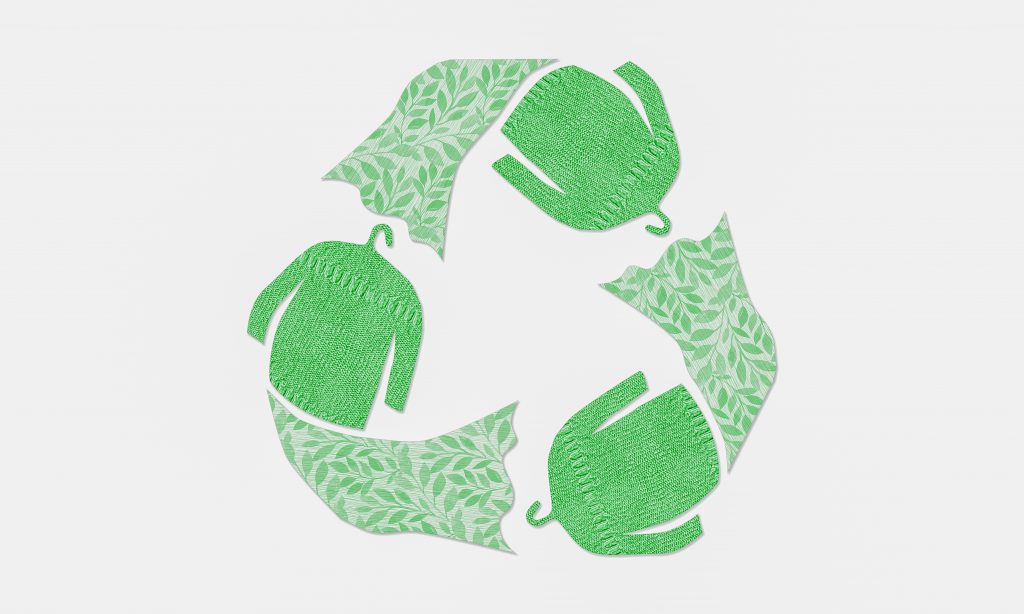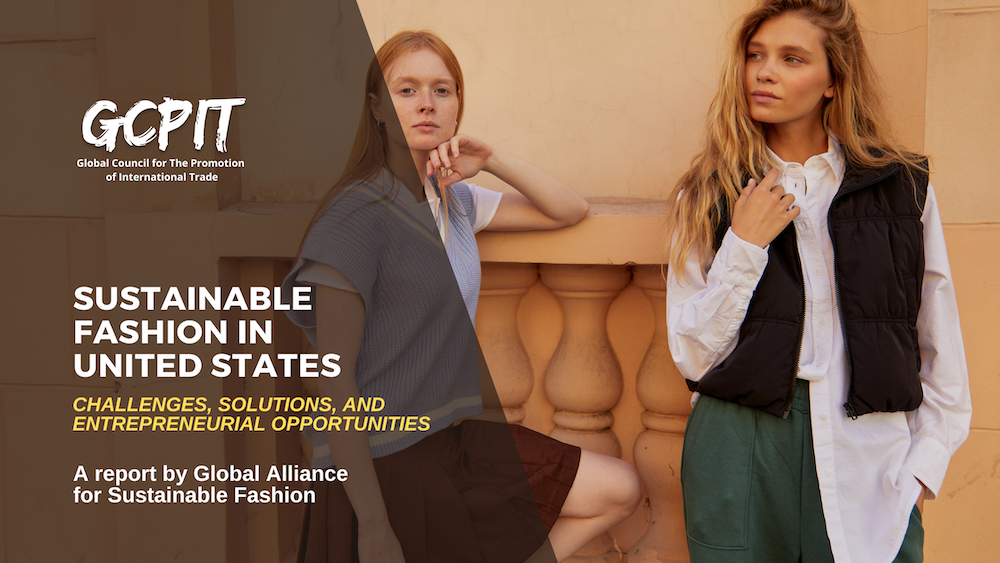Supporting Local Cape Town Sustainable Fashion for a Greener Future
Supporting Local Cape Town Sustainable Fashion for a Greener Future
Blog Article
Remain Ahead of the Curve by Checking Out Innovative Style Fads
In a market as vibrant as style, staying ahead involves greater than just complying with present fads-- it demands an exploration of technology. Smart fabrics, as an example, are changing garments right into practical work of arts, while 3D printing is changing style processes with its personalized, waste-reducing capabilities. As sustainability ends up being a keystone, innovations like green materials and circular fashion methods are reshaping environmental responsibility - Cape Town Sustainable Fashion. Additionally, the merging of innovation and fashion advertises a new period of customer interaction. Just how, after that, can these emerging patterns redefine the future of fashion, and what ramifications do they hold for brand names seeking to grow in this progressing landscape?

Embracing Smart Textiles
In recent years, the apparel industry has actually experienced a transformative change with the combination of wise fabrics, an advanced development that blends innovation with material. This advancement stands for not just a combination of aesthetic appeals and performance however also a significant leap in the direction of sustainability and customization in vogue. Smart textiles, additionally called e-textiles, embed advanced electronic devices such as sensors and conductive threads within the material, allowing garments to connect with the user or the setting.
These fabrics are designed to check physiological parameters, such as heart rate or body temperature, offering real-time wellness analytics. Beyond health and wellness applications, smart fabrics are also being used for flexible garments, which can alter color or pattern in feedback to ecological stimulations, thus using a dynamic fashion experience.
Moreover, the growth of energy-harvesting fabrics that create power from activity or sunshine is leading the method for self-sufficient wearable modern technology. This technology is interesting ecologically mindful consumers and developers aiming to decrease the environmental impact of fashion. As r & d in this field advance, smart textiles are expected to end up being progressively prevalent, improving the landscape of modern-day style with their multifunctional capacities.
The Rise of 3D Printing
Transforming the production landscape, 3D printing has actually become a game-changer in the apparel industry. This innovative technology has made it possible for designers to push the boundaries of creativity, producing detailed and customized garments that were previously unthinkable. By leveraging digital style and additive production, 3D printing helps with the creation of intricate geometries and patterns, enabling designers to experiment with new structures and structures.
A notable benefit of 3D printing in vogue is its capacity to generate on-demand, reducing waste and reducing stock demands. This performance not just optimizes manufacturing processes however additionally enables rapid prototyping, enabling developers to bring their visions to life in a much shorter timeframe. Furthermore, 3D printing supports customization to a degree unequaled by standard approaches, offering tailored fits and one-of-a-kind styles customized to private customer preferences.
The increase of 3D printing has actually also democratized fashion, making it obtainable to emerging developers who can currently make high-quality pieces without significant economic investment in conventional production framework. As modern technology proceeds to breakthrough, the fashion market is positioned to harness the complete possibility of 3D printing, discovering brand-new products and methods that will definitely redefine how fashion is conceived and created.
Lasting Fashion Technologies
As the apparel industry faces journalism requirement for environmental duty, lasting fashion advancements have emerged at the forefront of transformative modification. The growing understanding of eco-friendly influence has actually sustained a change in the direction of more eco-conscious techniques and materials. Developers and brands are now focusing on sustainability, including techniques that decrease waste and minimize carbon footprints.
One substantial growth is the rise of circular style, which highlights recycling and upcycling to extend the lifecycle of garments. This strategy not only reduces waste but additionally urges consumers to take on an extra mindful strategy to garments consumption. Additionally, using sustainable materials, such as organic cotton, hemp, and recycled polyester, has actually obtained grip. These products need much less water and power during production, dramatically reducing ecological effect.
One more innovation depends on the adoption of cutting-edge dyeing methods that make use of natural dyes or waterless procedures, consequently decreasing the huge amounts of water and chemicals typically get redirected here made use of in fabric dyeing. Additionally, improvements in biotechnology have actually brought about the creation of lab-grown leather and fabrics, using ecologically pleasant and cruelty-free options to traditional products. click over here Via these pioneering efforts, the garment industry is making significant strides towards a much more lasting future.

Tech-Integrated Garments
Tech-integrated apparel represents a cutting-edge blend of fashion and innovation, reshaping exactly how individuals communicate with their clothing. This ingenious domain is marked by the incorporation of clever textiles and embedded electronic parts, enhancing both capability and aesthetic appeal. From physical fitness trackers installed in sports apparel to warmed coats regulated through mobile phone applications, tech-integrated clothing provides consumers unprecedented convenience and flexibility.
Introducing brands are driving this trend, concentrating on producing garments that reply to ecological stimuli or customer commands. For instance, some garments can alter shade or pattern in response to temperature level changes, while others integrate biometric sensing units to keep an eye on health metrics like heart rate or stress levels. The seamless assimilation of modern technology right into textiles additionally extends to ecological sustainability, with initiatives to create self-cleaning textiles or garments that get used to climate condition, thus reducing the need for numerous layers.
Moreover, the advent of wearable technology is not just limited to clothing however includes accessories like watches and glasses, additional expanding the scope of tech-integrated style. As the market proceeds to innovate, the potential for personalization and customization in garments grows, using consumers special, tech-enhanced style experiences that satisfy their individual needs and preferences.
Future of Virtual Style
In the last few years, the future of online style has emerged as a transformative force within the market, leveraging improvements in digital technology to redefine exactly how fashion is produced, experienced, and consumed. By integrating increased fact (AR), virtual truth (VIRTUAL REALITY), and 3D design devices, developers can now craft interactive and immersive experiences that go beyond conventional style boundaries. Virtual fashion permits the development of garments that exist exclusively in digital environments, using limitless opportunities for advancement without the restrictions of physical production.
This electronic change not just provides opportunities for innovative expression but also addresses sustainability issues integral in typical fashion methods. Cape Town Sustainable Fashion. By getting rid of the demand for physical sources, digital fashion reduces waste and lessens carbon footprints. Moreover, the surge of online fashion straightens with the raising customer more info here demand for individualized and one-of-a-kind experiences, as digital garments can be tailored and customized to specific preferences effortlessly

Verdict
The style industry's future lies in the integration of ingenious modern technologies and lasting techniques. Online style is positioned to redefine consumer communications.
In recent years, the fashion market has actually witnessed a transformative shift with the combination of smart textiles, a cutting-edge technology that blends technology with textile.As the style market grapples with the pressing requirement for environmental duty, lasting style technologies have arised at the forefront of transformative modification.In recent years, the future of online style has emerged as a transformative pressure within the industry, leveraging innovations in electronic technology to redefine just how fashion is developed, experienced, and taken in. The rise of virtual style lines up with the boosting consumer demand for unique and personalized experiences, as virtual garments can be personalized and customized to private choices with simplicity.
The style market's future lies in the combination of ingenious technologies and lasting techniques.
Report this page